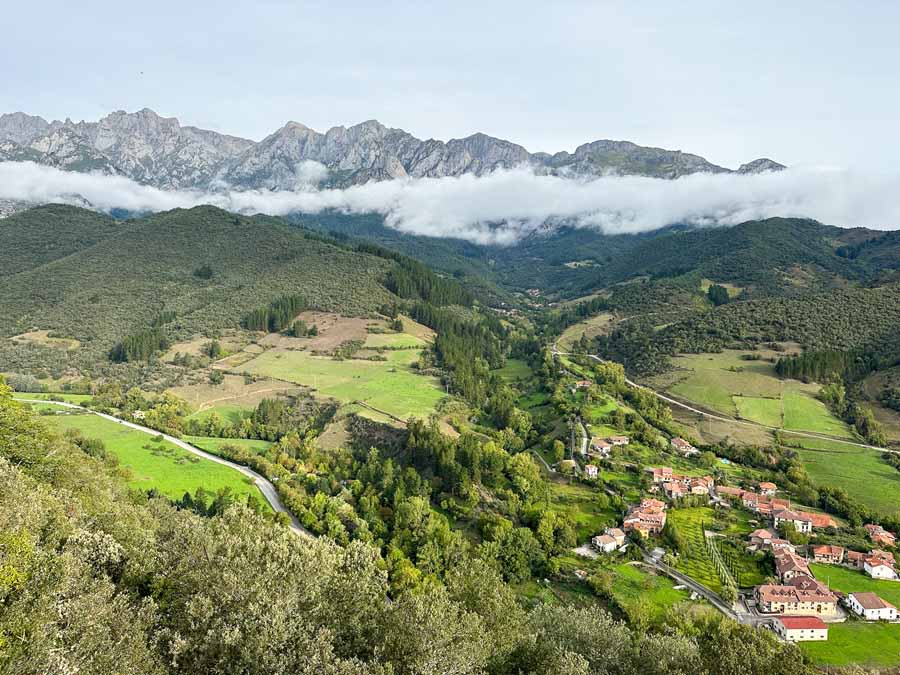Standard Camino Lebaniego Stages & Distances

The most popular way to walk the Camino Lebaniego is over 3 days. However, 4 days is also a fantastic option.
The Camino Lebaniego is fairly well-marked with red arrows and has its own marking of a red cross. This is a nod to the piece of the true cross located in the Santo Toribio Monastery. It’s worth noting that you still may find the famous yellow arrows of the Camino, as to indicate the direction of the Camino del Norte.
The Camino Lebaniego does follow the Camino del Norte for the first 7.25 miles or so until the village of Muñorrodero. Here you will see the official road split and red arrows and wooden signboards for the Camino Lebaniego.
Official Camino Lebaniego Stages & Distances in 3 Days
The official route states that Santo Toribio de Liébana is 71.9 KM (44.7 miles) from San Vicente de la Barquera. There are official distances and hours from the Camino Lebaniego Map compiled by the Cantabria Tourism Board.
- Day 1 | San Vicente de la Barquera – Cades | Miles / 28.5 KM | 7 Hours
- Day 2 | Cades – Cabañes | Miles / 31.3 KM | 11 Hours
- Day 3 | Cabañes – Santo Toribio Monastery (via Potes) | Miles / 12.1 KM | 3.5 Hours
Many pilgrims decide to split Day 2 over two days. This means an overnight in the village of Cicera. That would make Day 2 Cades – Cicera 16.9 KM with Day 3 Cicera – Cabañes 14.4 KM.
This Most Important Advice on Walking Any Camino Route
Remember, the Camino is all about the journey and not the destination. There is no right or wrong way to walk the Camino. Let go of judgments of yourself and others as you walk. It’s the best way.
Always walk your own journey, stay on the trail, listen to your body, and let the magic of the way unfold before your eyes.
Show kindness to fellow pilgrims by wishing them a “buen camino,” which means good walk, good way, or good path. It’s the common greeting along the way.

